HISTORY OF CHAR DHAM
(Yamunotri, Gangotri, Kedarnath, and Badrinath temples in Uttarakhand)
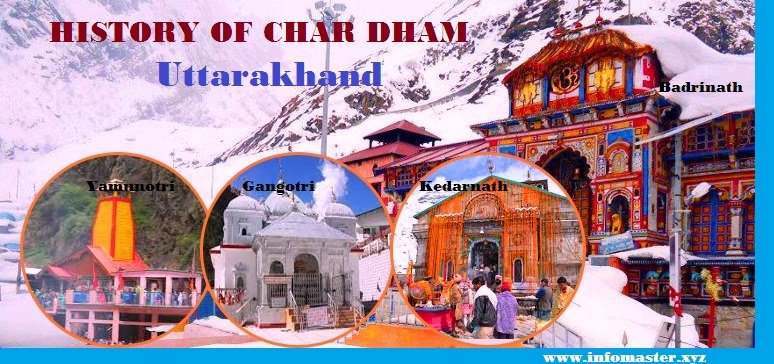 Four holy shrines of Hindus: Yamunotri, Gangotri, Kedarnath, and Badrinath are the most important Hindu Pilgrimages in India. There are four Abodes in Uttrakhand collectively referred as “Chota Chardham of India” and popular as “Chardham Yatra” When and how these places got linked in a pilgrimage circuit together is not known. Each of the places has its own individual and legendary history. However, maybe it is the immensity and spirituality of each site that has qualified them to form a sacred pilgrimage (Yatra).
Four holy shrines of Hindus: Yamunotri, Gangotri, Kedarnath, and Badrinath are the most important Hindu Pilgrimages in India. There are four Abodes in Uttrakhand collectively referred as “Chota Chardham of India” and popular as “Chardham Yatra” When and how these places got linked in a pilgrimage circuit together is not known. Each of the places has its own individual and legendary history. However, maybe it is the immensity and spirituality of each site that has qualified them to form a sacred pilgrimage (Yatra).
Till the 1950s going to the four most sacred destinations of Uttarakhand meant leaving on a strenuous trip by walking through the hilly trails. People, such as meandering sadhus, and those who could afford to travel with an entourage, were the most likely and regular pilgrims of Char Dham. After the 1962 Indo – China war, India put massive efforts in building methods for the better network and infrastructure at border areas. Now the roads could take one till the nearest points of the holy abodes. This encouraged people to start a tour of Char Dham circuit in Uttrakhand.
Among four scared destinations, Kedarnath is dedicated to Lord Shiva while Badrinath is committed to Lord Vishnu. On the other hand, Yamunotri and Gangotri are committed to Goddess Ganga and Yamuna rivers respectively. Chardham Yatra in Uttarakhand has an incredible importance in Hindu religion and it is considered that every Hindu should do Chardham yatra at least once in a lifetime.
History of Char Dham Temples in Uttarakhand is worth a visit. The Char Dham yatra goes on from the beginning of the summer, all the way to the end of the monsoons.
Badrinath is also a part of the Char Dham which includes three different cities, Dwarka, Puri and Rameswaram as well. However, the claim to fame of the Char Dham in Uttarakhand is the extremely cold climate which makes the temple out of reach through most of the months of the year. These temples are open only from May to October. It is trusted that a pilgrim must follow a particular route and order to make the most out of the pilgrimage viz. Yamunotri took after by a visit to Gangotri and then Kedarnath and finally a visit to Badrinath. Here are a few insights into the history of each of these four temples in Uttarakhand that form the Char Dham.
HISTORY OF YAMUNOTRI
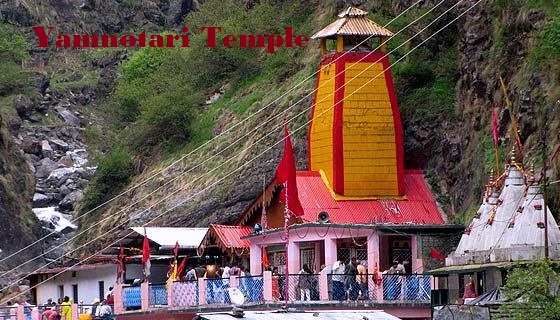 Yamunotri is where the second most holy river in India, the River Yamuna, takes birth. It is positioned in Uttarkashi district of Uttarakhand and lies at the height of about 3293 meters. Yamunotri Dham is the first stop in the pilgrimage. It is trusted that bathing in its water rinses all sins and protects from untimely and painful death. The temple is reachable from three of Uttarakhand’s major towns, Dehradun, Rishikesh, and Haridwar.
Yamunotri is where the second most holy river in India, the River Yamuna, takes birth. It is positioned in Uttarkashi district of Uttarakhand and lies at the height of about 3293 meters. Yamunotri Dham is the first stop in the pilgrimage. It is trusted that bathing in its water rinses all sins and protects from untimely and painful death. The temple is reachable from three of Uttarakhand’s major towns, Dehradun, Rishikesh, and Haridwar.
LEGEND BEHIND YAMUNOTRI
Yamuna Goddess is accepted to be Sun’s girl and twin sister of Yama (the god of death). It is said that sage Asit Muni lived here and bathed daily all his life in both Ganga and Yamuna. In his maturity, when he was not able to go to Gangotri, a stream of Ganga began to flow across the steam of Yamuna.
The temple of Yamunotri is believed to be built in 1839 by the king of Tehri, Naresh Sudarshan Shah. Other than the Yamuna Devi (goddess), the idol of Ganga Devi to is housed in the revered temple. There are a lot of hot water springs near the temple; Surya Kund is the most important among them. Devotees cook rice and potatoes in the kund and acknowledge it as a Prasad of the Devi.
HISTORY OF GANGOTRI
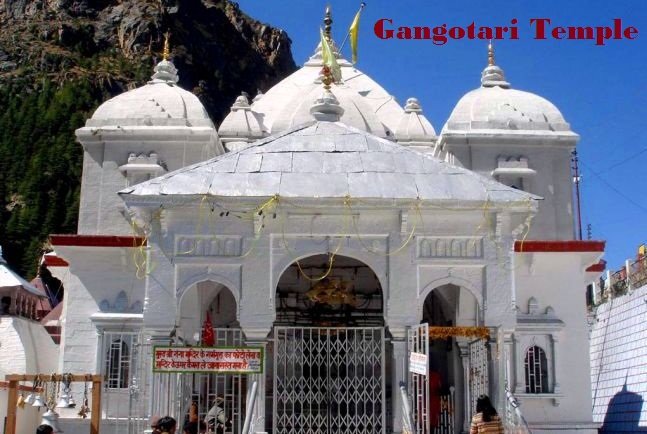 Gangotri Dham is committed to Goddess Ganga, who is said to have descended on earth to release all the sins and makes the souls of devotees pious. The river originates at Gaumukh is the place where the Ganges has emerged from Gangotri Glacier. It is positioned in Uttarkashi region of Uttarakhand, the first sanctuary of Gangotri was constructed by Amar Singh Thapa, a Gurkha general, in the early 19th century. In spite of the fact that it was later obliterated by the climate conditions and snow storms and was remade as it began getting as a tourist attraction. Gangotri is located and lies at the height of about 3400 meters.
Gangotri Dham is committed to Goddess Ganga, who is said to have descended on earth to release all the sins and makes the souls of devotees pious. The river originates at Gaumukh is the place where the Ganges has emerged from Gangotri Glacier. It is positioned in Uttarkashi region of Uttarakhand, the first sanctuary of Gangotri was constructed by Amar Singh Thapa, a Gurkha general, in the early 19th century. In spite of the fact that it was later obliterated by the climate conditions and snow storms and was remade as it began getting as a tourist attraction. Gangotri is located and lies at the height of about 3400 meters.
LEGEND BEHIND GANGOTRI
King Sagar attempted an Ashwamedha Yagna and sent his 60,000 sons along with the horse. The horse was missing; searching for the horse to the Sage Kapila’s ashram, the 60,000 sons stormed the ashram and disturbed sage who was in profound meditation. Angered Kapila opened his fiery eyes that transformed all 60,000 sons into ashes. Later, on Kapila’s advice, Anshuman (Sagar’s grandson) started praying to Goddess Ganga, requesting her to come down to earth to cleanse the ashes of his relatives and grant salvation to them. Anshuman was unsuccessful in his aim; it was his grandson Bhagirath whose rigorous meditation made Ganga come down to earth. Lord Shiva tied Ganga and distributed its water in various streams to save the earth from its mighty force.
HISTORY OF KEDARNATH
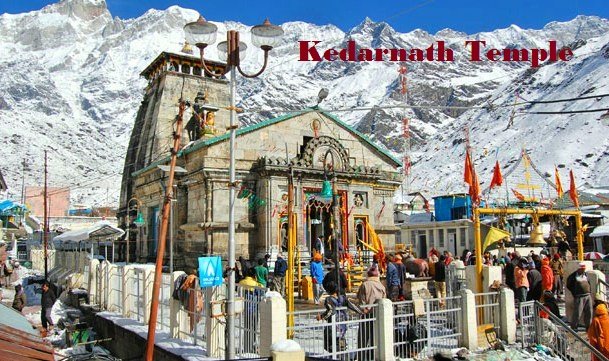 The Kedarnath Temple is situated on the banks of river Mandakini and is positioned at the height of 3600 m above sea level. The Kedarnath temple is committed to Shiva. Kedarnath is situated in the Rudraprayag district of Uttarakhand. It is trusted that initially the temple of Kedarnath was constructed by Pandavas and was then taken back to its glory by Adi Shankaracharya. It is one of the 12 jyotirlingas of Shiva. In Garhwal Himalayas of Uttarakhand, this shrine remains open between the Akshay Tritiya to Kartik Purnima. Devotees pay homage to Lord Shiva as the Lord of Kedar Khand, which was at one time the name of this district. It is said that this structure was illuminated by Adi Shankaracharya in the 8th century. The best way to reach Kedarnath is through Rishikesh.
The Kedarnath Temple is situated on the banks of river Mandakini and is positioned at the height of 3600 m above sea level. The Kedarnath temple is committed to Shiva. Kedarnath is situated in the Rudraprayag district of Uttarakhand. It is trusted that initially the temple of Kedarnath was constructed by Pandavas and was then taken back to its glory by Adi Shankaracharya. It is one of the 12 jyotirlingas of Shiva. In Garhwal Himalayas of Uttarakhand, this shrine remains open between the Akshay Tritiya to Kartik Purnima. Devotees pay homage to Lord Shiva as the Lord of Kedar Khand, which was at one time the name of this district. It is said that this structure was illuminated by Adi Shankaracharya in the 8th century. The best way to reach Kedarnath is through Rishikesh.
LEGEND BEHIND KEDARNATH
According to the legends, after the skirmish (battle) of Mahabharata, Pandava reached to Guptkashi in the region of Kedar Khand keeping in mind the end goal to get the blessings of Lord Shiva and to wash away their sins of killing their own relatives. Lord Shiva was in no state of mind to forgive them so easily, so he transformed himself into a bull and hide him in a group of cattle and started grazing. Bhima recognized him. While the cattle were coming back to their habitats, Bhima stood by stretching leg over two boulders and made allow cattle to pass under his legs. Lord Shiva tried to run away and began blending himself into the earth. Only the hump was gotten by Bhima. On this, Lord Shiva became happy and appeared in front of Pandavas. Consequently, the hump of bull is adored at Kedarnath.
HISTORY OF BADRINATH
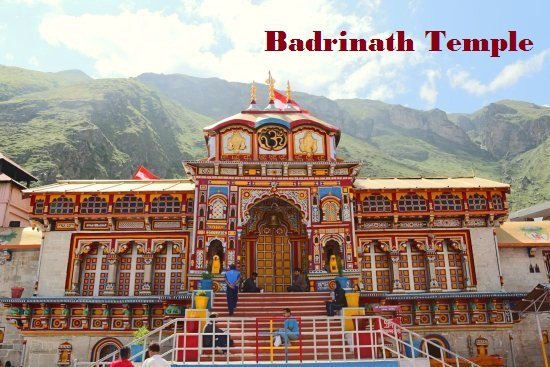 Badrinath is considered one of the holiest places in Hindu religion. It is positioned at the height of 3133 meters from sea level. Badrinath temple is as important as it is because of it being one of the 108 Divya Desams and committed to Vishnu. Badrinath temple is a piece of both Char Dham and Chota Char Dham. Adi Shankaracharya found the idol of Lord Badri in Alaknanda River and put it up in a cave close to the Tapt Kund. In the 16th century, a Garhwal King got the temple erected, which has been redesigned many times as a result of natural calamities. Sandwiched between Nar and Narayan peaks, the beauty of Badrinath Dham is further improved with the glorious background of Neelkanth peak. This is believed to be the final stop for the Uttarakhand Char Dham yatra. This is one of the most attractively maintained temples among the Char Dham Temples. According to the mythos, it was the first residence of Goddess Parvati and Lord Shiva. Later on, Lord Vishnu made Badrinath as his own abode.
Badrinath is considered one of the holiest places in Hindu religion. It is positioned at the height of 3133 meters from sea level. Badrinath temple is as important as it is because of it being one of the 108 Divya Desams and committed to Vishnu. Badrinath temple is a piece of both Char Dham and Chota Char Dham. Adi Shankaracharya found the idol of Lord Badri in Alaknanda River and put it up in a cave close to the Tapt Kund. In the 16th century, a Garhwal King got the temple erected, which has been redesigned many times as a result of natural calamities. Sandwiched between Nar and Narayan peaks, the beauty of Badrinath Dham is further improved with the glorious background of Neelkanth peak. This is believed to be the final stop for the Uttarakhand Char Dham yatra. This is one of the most attractively maintained temples among the Char Dham Temples. According to the mythos, it was the first residence of Goddess Parvati and Lord Shiva. Later on, Lord Vishnu made Badrinath as his own abode.
LEGEND BEHIND BADRINATH
As per one of the legends, the liberal way of life of Lord Vishnu was criticised by a sage, after which Vishnu went to meditate as an act of penance, over here. The incarnation of Nar and Narayana as a human being and Goddess Lakshmi (his better half) saved him from rain and sun to be changed in hedges of berry. Henceforth, on account of Badri (Berry) that made this region famous as Badri Vishal. Vishnu is the Nath (lord) of Lakshmi, thus, this place became famous as Badrinath.
Mythology also links Badrinath with Mahabharata. It is said that after the battle of Mahabharata, Pandavas and Draupadi respected this place as an ascending hill to heaven.



